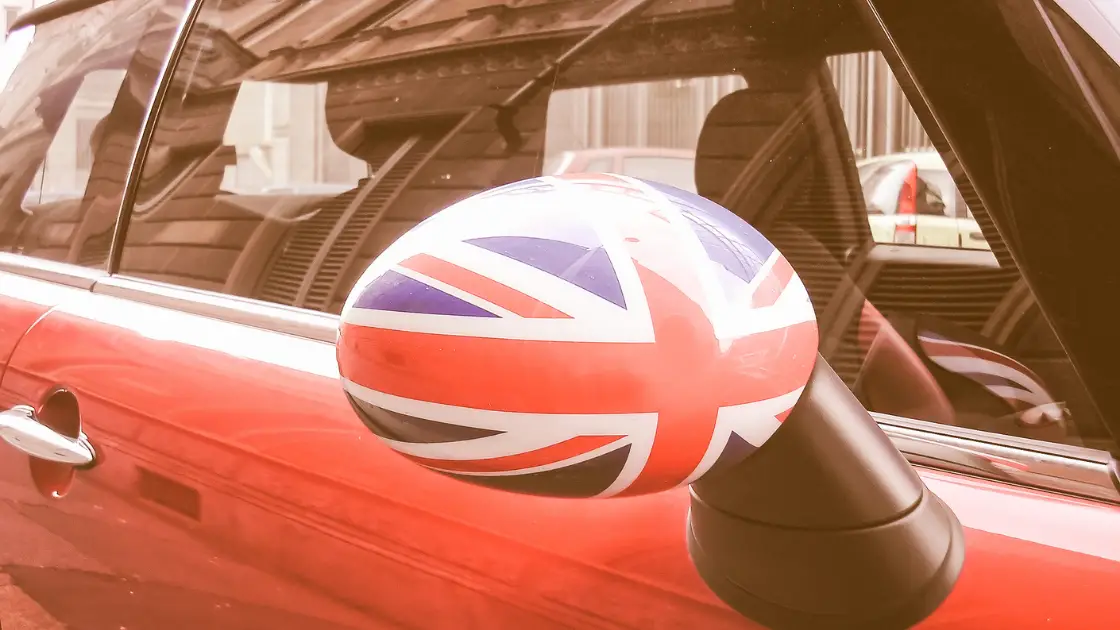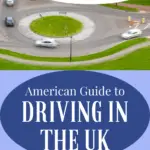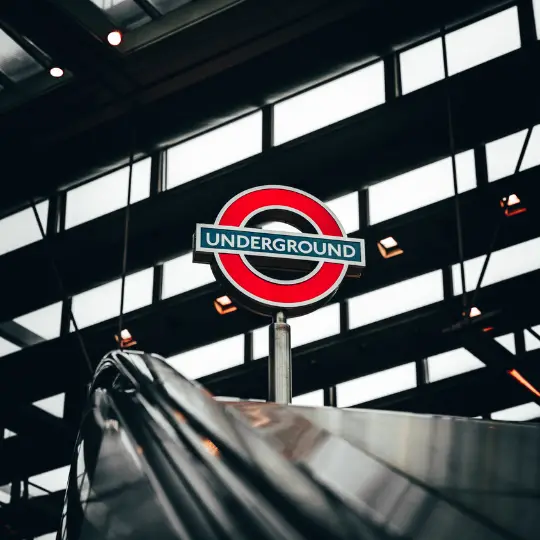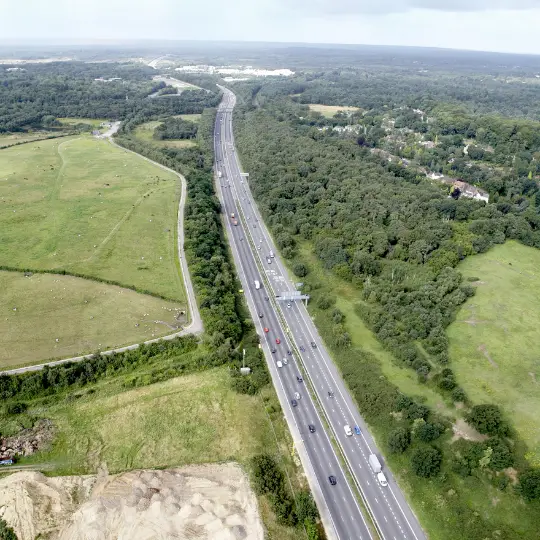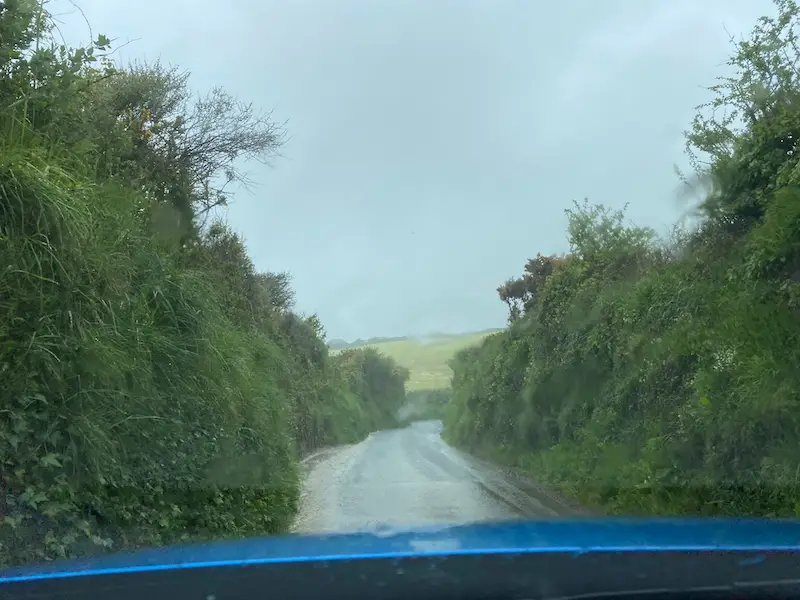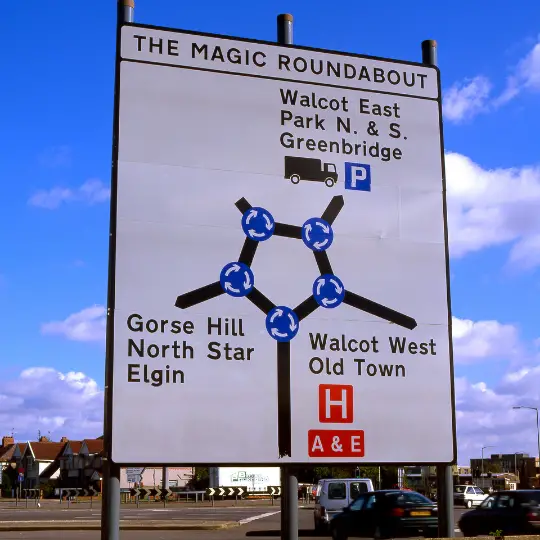Driving in the UK for Americans can feel crazy. When I first started driving here in 2021, I was constantly nervous. It was a shock to the system even though I’ve been licensed to drive in the US since the age of 16.
UK roads are often small and subject to different rules than I was used to in America. Nevermind that here you are sitting on the right side of the car and driving on the left side of the road! I put together this guide to help my fellow Americans feel more prepared to drive in the UK.
This article contains affiliate links, which means that I may earn a small commission when you make a purchase. Affiliate links cost you nothing to use, and they help keep my content free – a win-win! For more information, see the affiliate disclosure.
GET READY TO MOVE TO THE UK WITH THESE TOOLS



Alternatives to Driving in the UK for Americans
First of all, don’t assume that you need a car to get around. If you’re visiting London or another large city, you absolutely do not need a car. In fact, driving in London is one adventure I never plan to have.
I live in a smaller town outside of London where having a car is convenient and even necessary for some outings. However, I still drive much, much less than I ever did in the US. I’m extremely thankful for the trains and buses that help me get around.
Not having a car is also a good way to save money if you’ve moved to the UK.
Driver’s License Requirements for Visitors in the UK
If you are planning to drive as a visitor in the UK, then the driver’s license issued by your US state will be enough to rent a car and get going. If you’ve moved to the UK, you will eventually need to apply for a UK license. See my guide to that process further down.
I recommend and use Discover Cars for finding the best rates and convenient pick up points for rental cars in the UK.
For help finding the best rental car prices and selecting the right insurance coverage for your rental, don’t miss my post on renting a car in the UK.
Driving On The Left Side of the Road
When driving in the UK your first time, start by following these tips:
- Take it slow
- Keep left
- Yield to the traffic on your right when entering a roundabout
These are very basic rules, but should always be top of mind when you’re driving in the UK.
For a more in-depth look at what you should expect when driving in the UK, I recommend Tripiamo Guides. Their UK video guide shows you exactly what to expect on the road and includes simple explanations of even the most confusing scenarios. I wish I’d had this before I started driving here!
Sitting On The Right Side of the Car
I found that the hardest part of driving in the UK wasn’t driving on the left side of the road. Instead, it was being sat on the right side of the car. All of my built-in perception of how much room I have on each side of the car was based on sitting in an American vehicle. Suddenly I was sitting on the opposite side of the car and needing to adjust for spacing completely differently.
Making the mental adjustment will take time, but even a visitor to the UK will start feeling more comfortable with a little practice. Practice will, of course, be less stressful if you’re able to avoid the tiniest roads.
What American Drivers Should Know About Narrow Roads in the UK
In case getting used to where you’re sitting in the car wasn’t enough, it’s important to remember that many roads in the UK were not designed for modern cars. You will not find many straight line freeways like in the US, and you will need to drive in much narrower lanes when you head out to the country.
After our first road trip out to Cornwall, I began to joke that a dashed line down the middle of the road was truly a luxury. It is common to find roads that would be one-way only in the US used in the UK for two-way traffic.
M Roads in the UK
In general, driving on an “M” road such as the M25 outside London will be similar to freeway driving in the US. Keep in mind that the right lane is now the fast lane as you enter and exit from the left. Other than that, these roads will likely be the most familiar to American visitors.
A Roads in the UK
The larger country highways are often “A” roads. These are major roads connecting cities across a region. They will be narrower than M-roads, have speed limit variations as you enter and leave towns, and will be broken up by roundabouts more often.
A roads are still likely to be multi-lane in each direction and have lane widths that don’t feel too narrow to American drivers.
B Roads and Smaller in the UK
The toughest roads for American drivers to cope with are “B” roads and smaller lanes. B roads are the small country roads between towns. Meanwhile, I’ve been on lanes that I’d be more likely to call a hiking trail a few times. I’m talking able to easily touch the hedges on either side of the car (and this was still for two-way traffic!)
Apple Maps and Google Maps absolutely do not avoid the smallest of these roads. Take care when relying on any type of GPS to reach your destination. It doesn’t hurt to examine your map route before you set out to avoid an unnecessarily difficult to drive path.
While driving on narrow roads can be stressful, the payoff is often some of the most beautiful parts of the country. You’ll find narrow roads in many of the Cotswolds villages. We also encountered very narrow roads on our way to find King Arthur’s legends at Tintagel Castle. Don’t rush and you’ll make it through.
How to Drive on Narrow or Single Track Roads
Navigating in narrow lanes often means stopping at a wide space to allow an oncoming car to pass. This can happen even on fairly suburban roads where parked cars narrow the available room for driving.
If you are able to pull safely to the left, then you should move over until the traffic coming towards you has passed. If you cannot pull to the left, then slow to give the ongoing driver time to pull over instead.
In some areas you may encounter single track roads. These roads only have space for one car, but will be dotted with wider patches for cars to pass. You may have to reverse back to a passing area if there is no where to maneuver where you encounter traffic.
For video tips on navigating single track roads, Tripiamo makes even these tricky spots easy to understand. Get up to speed without the stress.
What Americans Should Know About UK Rental Cars
Considering all of these narrow roads, it should come as no surprise that most cars in the UK are smaller than those in the US. The largest you typically encounter are similar to a mid-size SUV in the US. For context, I’ve thinking the size of a Nissan Rogue.
If you’re planning your own road trip, consider the space you will have available for luggage. This is not the time to assume having your own car gives you space for lots of large suitcases. It’s also not a great idea to rent the economy-size vehicle if you have 4 adults plus luggage to carry along.
One final note for rental cars – you can rent an automatic car here, but it will cost more than renting a manual. Trust your own judgment and driving ability, but I personally would rather pay a bit more to have a less stressful driving experience.
Service Stations in the UK
When you’re driving on an M-road, you will see plenty of signs for lay-bys and for services. A lay-by is a very simple stretch where you can pull off the main road. There’s typically not much there beyond maybe a bin to toss your trash, but they can be handy when you just need to stop for a few minutes.
Service stations in the UK are actually pretty great. They often have underpasses so that shops on both sides of the freeway are easily accessible. It’s also usually a multi-use stop offering a petrol station, quick restaurants like Starbucks or McDonald’s, as well as shops selling souvenirs and groceries.
Many are even nicer, with picnic and play areas or walking trails for dog owners.
On our trip to and from Cornwall, we stopped at Teals on the A303. In addition to a well-stocked farm shop, there is a restaurant and an open field that was perfect for stretching our legs and giving our dog a run around.
Service stations like this featuring local produce are dotted across the country. Tebay in the Lake District is even the focus of a Channel 4 television show that highlights the farmers, food producers and crafters whose work is sold at Tebay Service Station.
Fuel Prices in the UK
According to the RAC Foundation, the average cost of a full tank of gas over the past year was between £72.71 and £84.26. That average is based on a full tank for a Ford Focus.
A quick note that petrol in the UK is sold by the litre rather than the gallon. Prices are typically listed as price per litre in pence, such as 139.4p/litre.
Applying for a UK Driver’s License
When you move to the UK as an American, you can initially drive on your US license. Your US license is valid for driving in the UK during your first 12 months in country only. I bought a car, set up insurance, and began driving while only having my California driver’s license.
Getting a UK driving licence (note the slightly different spelling here) required a new application the same as if I were a brand new driver.
When to Apply for a UK Licence
To be eligible for a UK provisional licence, you must have legally lived in the UK for at least 185 days total in the past 12 months. This means that you’ll want to apply pretty quickly after reaching 185 days in country to ensure you can obtain a UK licence before your US license becomes invalid.
How to Apply for a UK Licence
To apply for a provisional licence, you will go through the DVLA. The process is fairly straightforward and can be completed online. You used to need to mail in your residence permit with your application, but this should no longer be the case since permits are now tracked digitally.
Theory Exam
Once you have a provisional licence in hand, you still need to book a theory exam. The theory exam consists of 50 multiple choice questions, of which you must answer at least 43 correctly to pass.
Practical Exam / Driving Test
After passing the theory exam, you will then need to book and pass a driving test. This is a hands-on test with an evaluator riding along with you for around 40 minutes. It is actually very common for applicants to fail this test, even experienced drivers.
Most people prepare for the driving test by taking lessons or reviewing driving videos. Either way it is a good idea to practice driving in the area where you will take the test so you aren’t navigating new roads on test day. Reviewing videos or working with an instructor can also point out faults you may not be aware of.
While needing to pass multiple exams to obtain a UK driver’s licence is a lot of work, I do appreciate the strong emphasis on good driving here. Unlike the US, roads here are often challenging and pedestrians and cyclists are plentiful. A little more training to ensure safety for everyone can’t hurt.
Driving in the UK can be scary for Americans. However, there are many beautiful places here that are difficult to impossible to visit without the benefit of a car. Take your time (and take a deep breath) and I’m sure you’ll be hitting the roundabouts like a pro before you know it!

